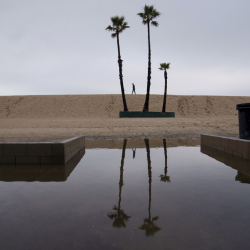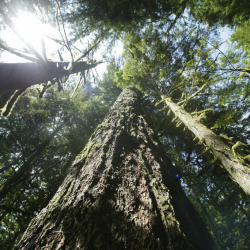
|
A significant discovery of gold and other precious metals in Haiti's Northeastern mountain range has given residents hope that once mining gets under way in about five years, the revenues will offer the resources needed to transform a country beset by poverty and ravaged by earthquakes and disease into an emerging island economy.
According to recent reports, a round of exploratory drilling by U.S. and Canadian investors this year has unearthed valuable metals including gold, silver and copper, which may be worth close $20 billion. This discovery is viewed by many as Haiti's gold moment, a potential economic boon that could help the nation rebuild its infrastructure and improve the quality of life of its 10 million residents, many who live on $1.25 per day. That is, if the potential mining projects are managed in a transparent manner by the country's rulers, according to Bureau of Mines Director Dieuseul Anglade.
The current project is being led by the Société Minière du Nord-Est (SOMINE, SA.), a Haitian company that is a partner of Majescor and its affiliate SIMACT Alliance Copper Gold Inc. Haitian engineer Michel Lamarre, who heads SOMINE, signed a 15-year mining agreement in March 2005 that includes research and mineral rights. He has said the gold mines could end years of Haiti's dependence on humanitarian aid.
However, prospecting for gold in Haiti has a long and traumatic history. More than 500 years ago, the island's Taíno peoples produced ornaments from gold that flowed in Haiti's riverbeds. By 1492, Christopher Columbus landed in Mole St. Nicholas in northwest Haiti. Shortly after his arrival, Spanish settlers came and exploited the area's gold mines and forced the Taíno tribes into slavery. They killed off most of the tribe members, a practice that many Haitians regard as attempted genocide. By the time slaves were brought from Africa, both the gold and the Taínos were decimated, and the colonial powers' commercial interests had turned to sugar.
Centuries later, in the 1970s, United Nations geologists reported that Haiti had sizable deposits of gold and copper. By the 1980s, Newmont Mining Corporation ceased gold exploration in Haiti because of political instability and falling gold prices. Then, in early 2006, Eurasian Minerals, a company based in Canada, began its mining efforts. At the time, the firm's lead geologist, Keith Laskowski, told the Sunday Morning Post (pdf) that Haiti's results "were the best results I've seen" in his 27-year career prospecting gold mostly in Asia and the Amazon.
The next phase in this possible golden scenario is commercial mining, an industry that in Haiti has not had extensive federal oversight. Laurent Lamothe, a successful telecommunications executive who took office as prime minister this month, said that government officials are drafting legislation to regulate this new mining industry. What he calls the "correct mining law" will "ensure that the right portion comes to the state. It ensures that the people living in the region where the mines are, that their rights are protected. It ensures environmental protection," he told AP after the approval of his Cabinet.
As for the locals of the mining region, SOMINE says that the project is already leaving a financial footprint in the area since it employs between 50 and 100 day laborers, as well as nearly 50 other Haitians hired as geologists and technical and support staff.
The Northeast region where the gold was found was identified as a priority area under former President René Préval's growth strategy in 1996. Investments were directed toward an industrial park and port facilities in that administration. The new university campus offered by the Dominican Republic as a gift to its Haitian neighbors is located a few miles from the mining area. The efforts presage employment and some level of sustainable development. What long-term benefits the locals will reap and how their rights to the land and to a clean environment will be protected will depend on the mining law that will be passed, as well as its enforcement.
While the prime minister talked about ensuring that the "right portion comes to the state," Anglade told Agence Haitienne de Presse (translated from French) that "it is the companies with which we signed the contracts that we have to watch." To do so, he advocates the reinforcement of the authority of the mining bureau he directs so that it can protect the interests of the state as well as strengthening the watchdog powers of the ministries of finance, environment and commerce-industry.
Beyond the integrity of the mining companies, many more Haitians are watching the state itself to see what the government will do with this potential $20 billion treasure that is the property of the Haitian people. What benefits Haiti will really get is the question asked by many, in a country familiar with the bottom rungs on the list of the most corrupt states of Transparency International, an anti-corruption organization. Ultimately, the answer to this question is what will decide if it is indeed a gold moment for this country, which desperately needs a multibillion-dollar windfall.
Monique Clesca, a Haitian novelist and essayist, works in international development. Her last article for The Root was "Surviving the Haiti Earthquake."





















































































































































































































































































































































